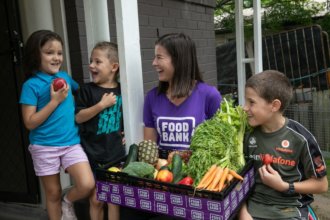What are Food Miles?
June 30, 2016
Would your food walked 500 miles and your food walk 500 more? How does fruit and veg delivery help cut down on food miles? And just what are they? HelloFresh takes a closer look…
Food miles are the measure of distance it takes for our food to reach our table. As our city fringes expand, so does the amount of miles that our food must travel to get to us. The environmental impact of the food mile is calculated by the distance travelled and the pollution caused by this journey, be it by car, truck, plane or boat.
Agriculture is an energy hungry industry. As Australians are becoming increasingly aware of where our food comes from and the support for more ethically farmed, sustainable food is on the rise. However, what many of us forget to consider is the transport of our food to our supermarkets and our farmer markets. And with food prices on the rise, cheaper overseas alternatives can sometimes be an attractive option, thus increasing our food mile quota.
So what can we do to reduce the environmental impact of the food mile?
1. Buy locally.
This not only supports local growers, but also ensures quality and taste. When you buy locally you are more often that not buying food that is in season, picked or packed recently and not spent time (or too much time) in cold storage. If you are buying preserved or canned foods, check the label to see the country of origin and try, where possible, to buy closer to home. HelloFresh supports local growers and aims to where possible limit the distance between supplier to customer via their simplified supply chain.
2. Calculate your miles.
There are a number of websites that calculate your the amount of food miles with some offering tips on what you can do to counteract the carbon footprint of your food’s journey. Simply enter your location, the type of food and the place of origin and the calculator will do the rest. Our favourite is http://www.foodmiles.com.
3. Ask questions.
Unsure if its local? Sometimes even produce that appears to be local can have gone on a wayward journey to get to you. There is nothing wrong in asking the providore, restaurant, or general store where your food has come from. Just like you can check the label on a sweater to see where it was made, you have every right to know the origin(s) of your food. Informed choices are healthy ones – and better for the environment too!
4. Grow your own.
Of course city dwellers can find this last point a little tricky if they don’t have a backyard to cultivate herbs, fruits and veggies. However, community gardens in urban centres are becoming more and more popular. Sydney alone has over 20 inner city community gardens and many other cities around the country are following suit. No garden in your area? Why not write to your local council or get the local school involved. Vertical gardens are also popular in small dwellings and with a little dappled sun and some TLC you can have an abundance of fresh produce growing in no time.
If you’re burning to know more about HelloFresh’s dedicated suppliers, check them out here!











